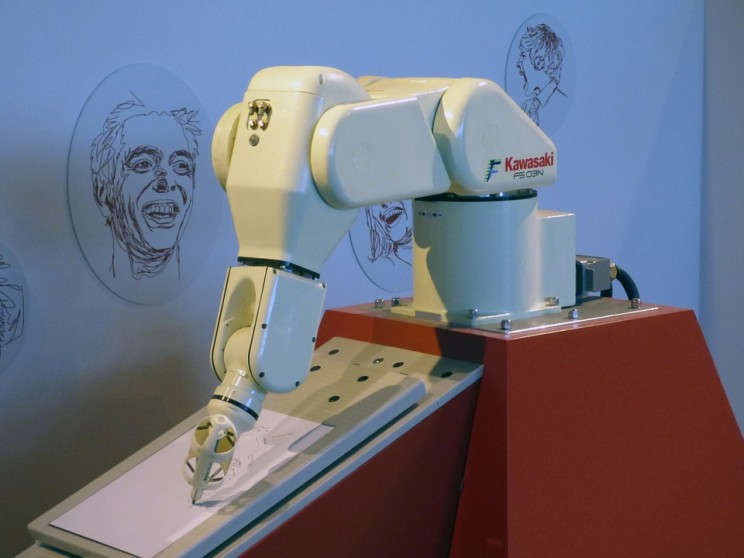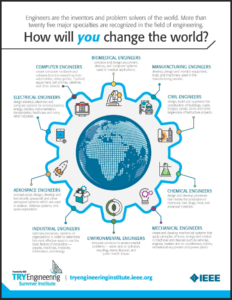
What are the job duties of engineers? This article will provide information about how to become engineer, what job duties engineers have, and what education requirements they need. Learn about the Soft skills needed to become an engineer and what education is required. Here are some tips for aspiring engineers. Learn more about what engineers do and how you can get hired. What is the outlook for graduate engineers? After reading this article you will be prepared to take the next step on your engineering career.
Career outlook for engineers
Engineering encompasses many areas and there are many types of engineers. An engineer may work in any field that involves construction, such as architecture, mechanical engineering, or civil engineering. There is also a demand for environmental engineers, who study methods for reducing the amount of pollution. Engineers are often employed by government agencies because of the new regulations and construction materials. The overall outlook for engineers is generally positive, and job growth should continue for at least the next decade.
According to the U.S. Bureau of Labor Statistics engineers' employment will grow by 4% between 2014-2024. This means that approximately 65,000 engineers will be available by the end the decade. The job outlook for engineering jobs is varied, but it is generally very good for those in biomedical engineering. Biomedical engineers research biological problems and develop solutions to meet medical needs. The specializations of biomedical engineer include 3-D printing and stem cell engineering.

Soft skills needed by engineers
Engineering graduates must have a broad range of soft skills. This is especially important for students pursuing technical degrees. Soft skills are vital for job seekers, as engineers interact with clients throughout their day. They must be skilled in communication, negotiation, as well as listening. Engineers must be confident and enthusiastic to interact with clients every day during their career. Listed below are some of the most important soft skills needed by engineers.
Communication is an essential part of engineering. Engineers should always be prepared to take on responsibility for problems that arise. Engineers must also be honest, reliable, and optimistic when confronted with difficulties. Engineers can focus their efforts on one specific aspect of engineering or choose a niche to learn these skills. There is no right answer for soft skills. Soft skills can be just as valuable as technical skills. It does not matter which career path an engineer chooses. However, it is essential to master these skills.
Job duties of engineers
Engineers can perform many tasks. Engineers are able to help with the design of systems and technologies as well as solve global problems. Chemical engineers, for example, use the principles of math, biology, and physics to improve the efficiency and quality of certain substances. Designing new medical equipment is the job of biomedical engineering. Computer engineers develop software and other hardware systems. This is done using science to improve the user’s experience. These engineers can also work in inter-disciplinary teams.
One of the major responsibilities of an engineer is to plan and manage activities in a facility. They develop and manage projects by working with management to determine the best design for the facility, as well as provide technical support. They oversee maintenance, design maintenance programs and test new equipment. These engineers also provide daily guidance to maintenance staff, train them, and oversee the proper operation of plant utilities. They ensure that all safety and environmental standards have been met.

Engineering education requirements
In some states, education requirements for engineers are not the same as those for other professions. Pennsylvania's requirements for PEs include 24 hours of professional education every two years. The maximum 12 hours can be carried forward from one license renewal period into the next. Similar to Indiana, engineers need to earn 30 PDH credits for each of their two-year renewals. One hour must be dedicated towards ethics.
Engineers are required to complete continuing education hours in order maintain their professional competency. Although continuing education can be costly, there are many free options to earn CEUs. This article will examine the benefits of continuing education to engineers. We will be looking at CEU courses for engineers that are free. If you're planning on pursuing a career as an engineer, it is important to consider these CEU courses and find one that will best fit your learning style.
FAQ
Which type of engineer gets the best salary?
Software engineers, who are responsible for writing code for computers, would be the right answer. Software engineers also have the freedom to choose what type of project they would like to work on. Software engineers are able to work in any industry. However, they often choose to work for technology companies such as Google and Microsoft.
What does a Chemical Engineer do, and what are their responsibilities?
Chemical engineers employ math, science engineering, technology, as well as business skills to develop chemical processes and products.
Chemical engineers can choose to specialize in areas like petroleum refining or pharmaceuticals, food processing, agricultural, textiles and paper, mining, metalurgisty, and power generation.
They work closely alongside scientists and researchers to solve difficult technical challenges.
What's the average hourly salary of engineers?
These figures can vary from one person to another and from company to company. An entry-level software engineer can earn around $60,000 annually. After you have been working for a few more years, your average salary may rise to over $100,000.
Which engineering skill is most difficult?
The greatest engineering challenge is designing a system that is strong enough to withstand all types of failure, yet flexible enough for future changes.
This requires lots of testing and iteration. This requires an understanding of the system's behavior when things go wrong. This is where you have to make sure that you are not just solving one problem but rather designing a solution that solves many problems simultaneously.
Statistics
- Typically required education: Bachelor's degree in aeronautical engineering Job growth outlook through 2030: 8% Aerospace engineers specialize in designing spacecraft, aircraft, satellites, and missiles. (snhu.edu)
- 14% of Industrial engineers design systems that combine workers, machines, and more to create a product or service to eliminate wastefulness in production processes, according to BLS efficiently. (snhu.edu)
External Links
How To
How to read engineering drawings
Engineering drawings give a visual description about an object. There are many elements in these drawings such as text, dimensions and symbols. Since ancient times, engineering drawings have existed. The 3000 BC mark was when the first known drawing was made by an Egyptian engineer. These drawings are used by engineers to create objects such as bridges, buildings, and machines.
Engineers use engineering drawing to explain how something looks. This makes it easy for others to understand your message. Engineers create things using numbers and symbols to indicate measurements. This makes it simpler for people who don’t understand engineering.
There are two main types, 2D (or 3D) of engineering drawings.
2D drawings can be flat representations or three-dimensional objects. These can include sections, elevation views, plans, and axonometric projects.
3D drawings depict real-life objects from many angles. Computer software is often used to create 3D drawings. SketchUp, for example, allows you to view a bridge from the sky. You would then select "View" and choose "Top View." Next, rotate your view so that you can see everything from the top.
2D drawings are best viewed as a whole. Don't just focus on one part. You should also pay attention to the important things in the top right corner.